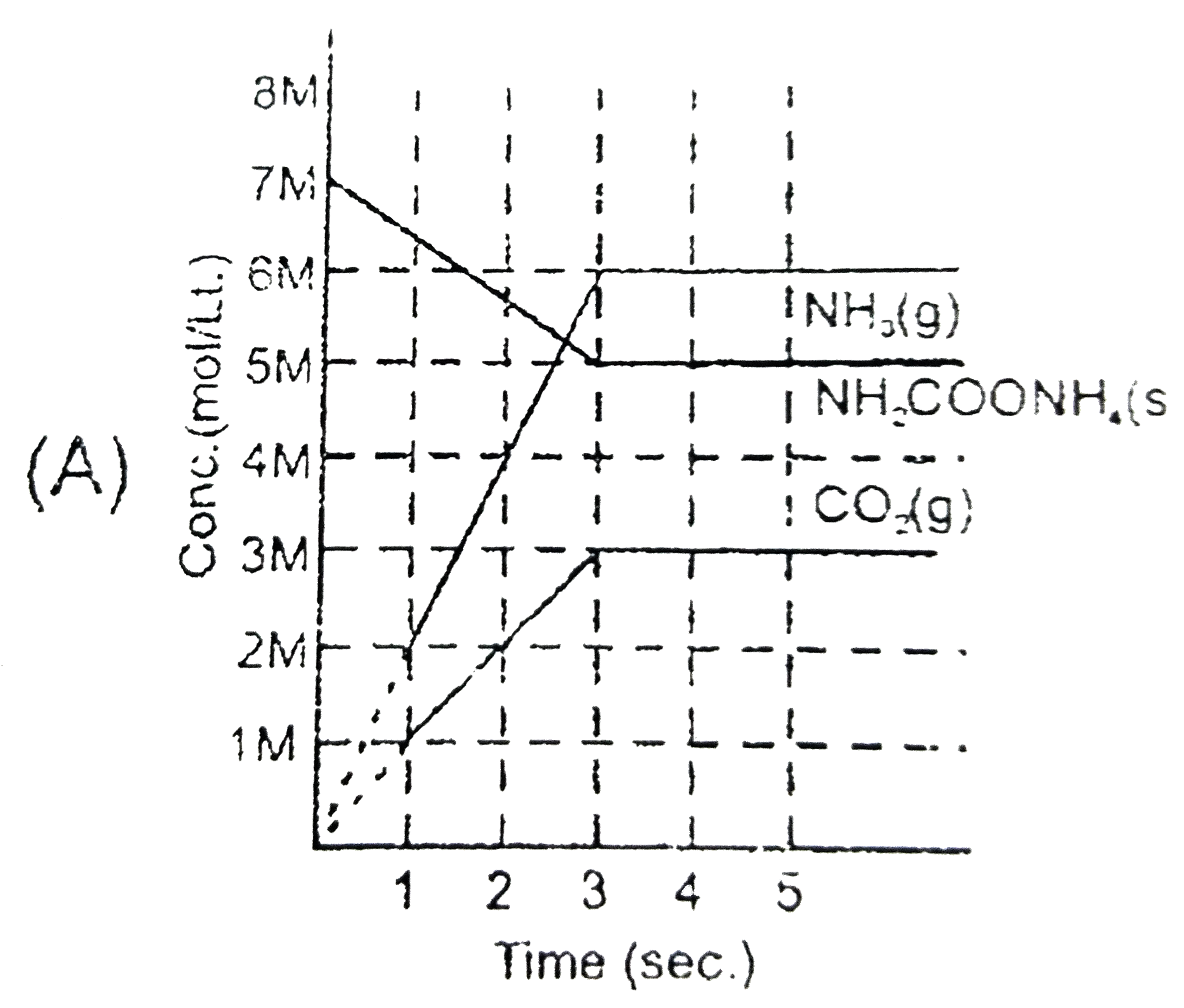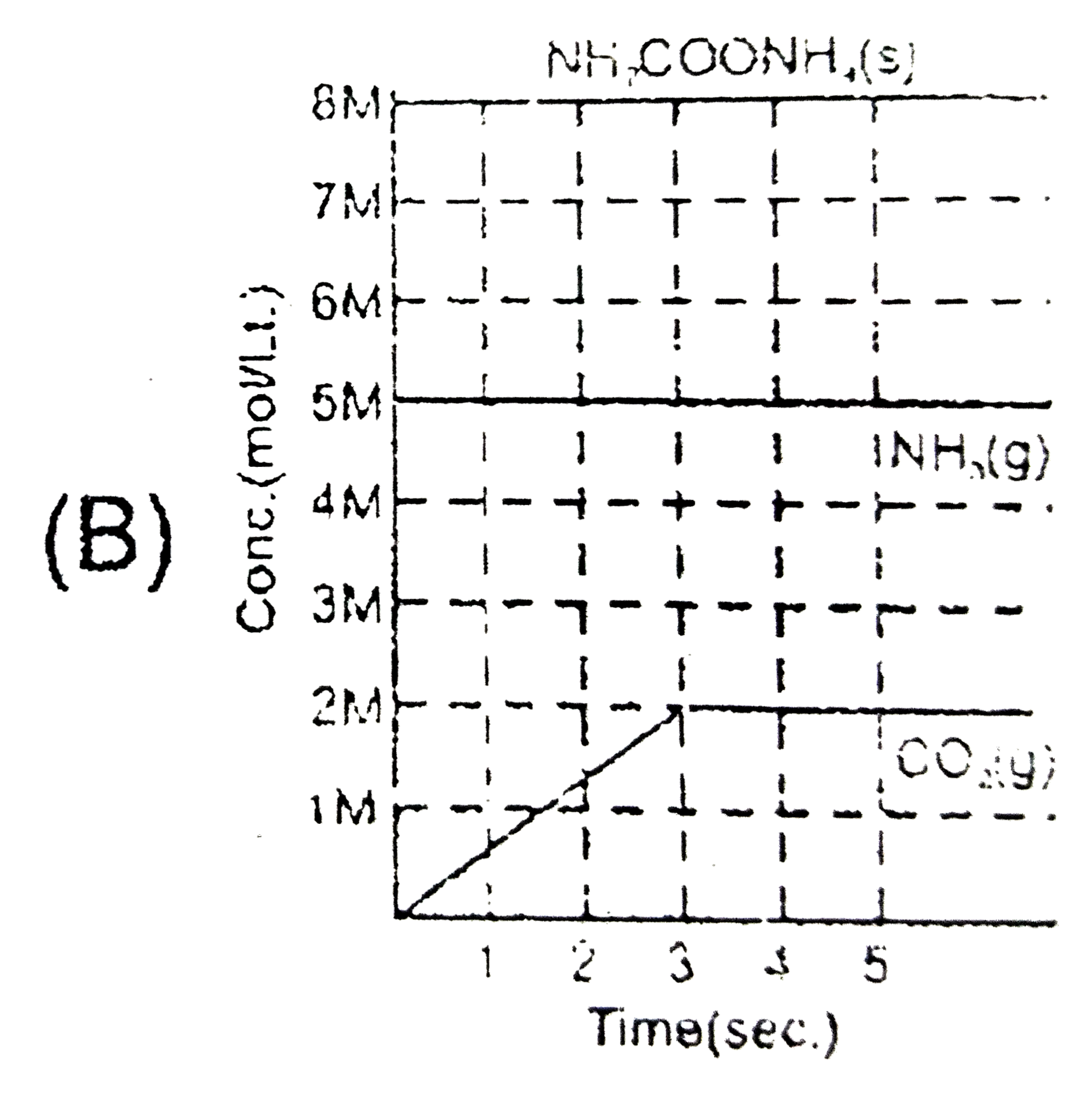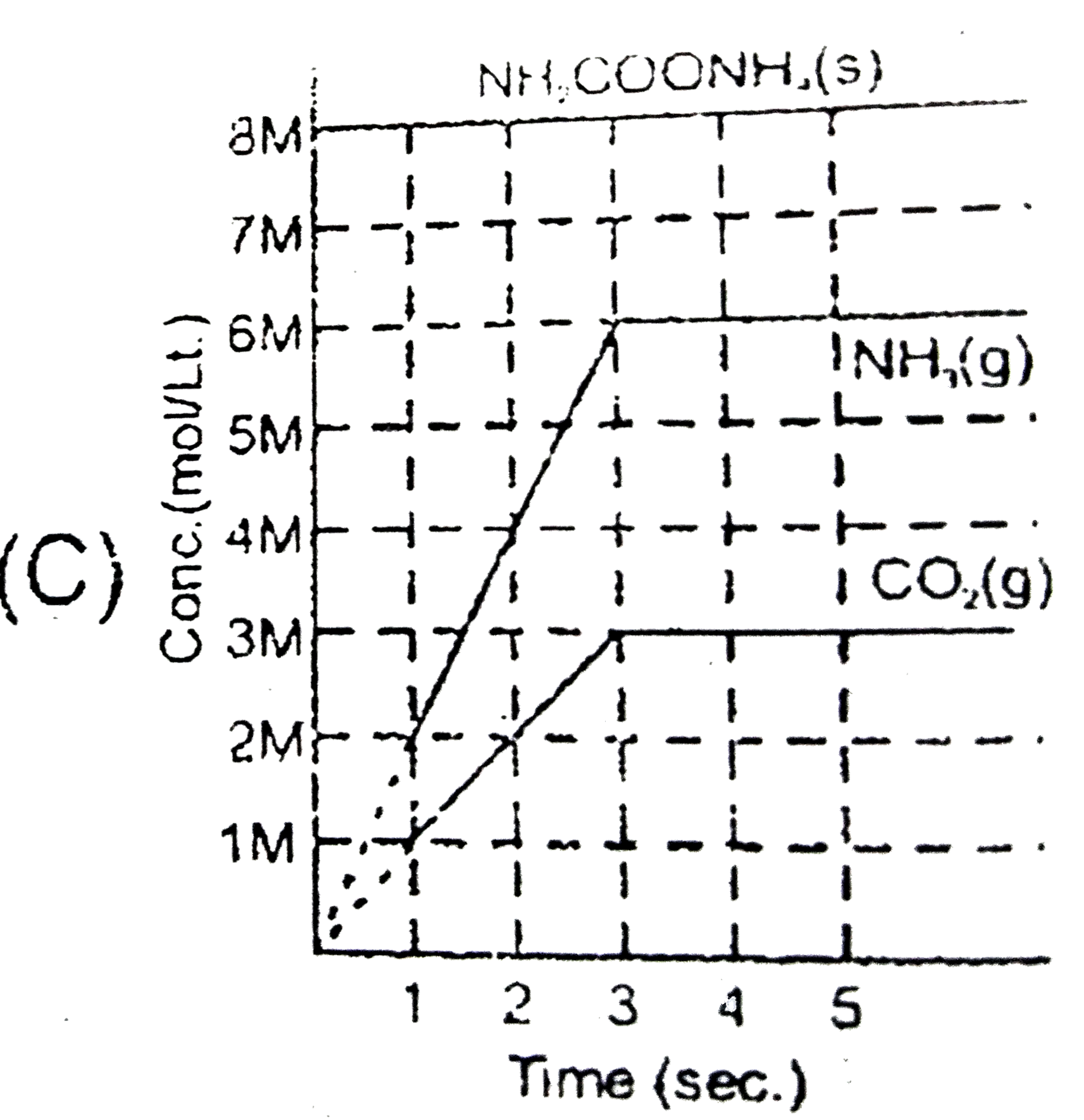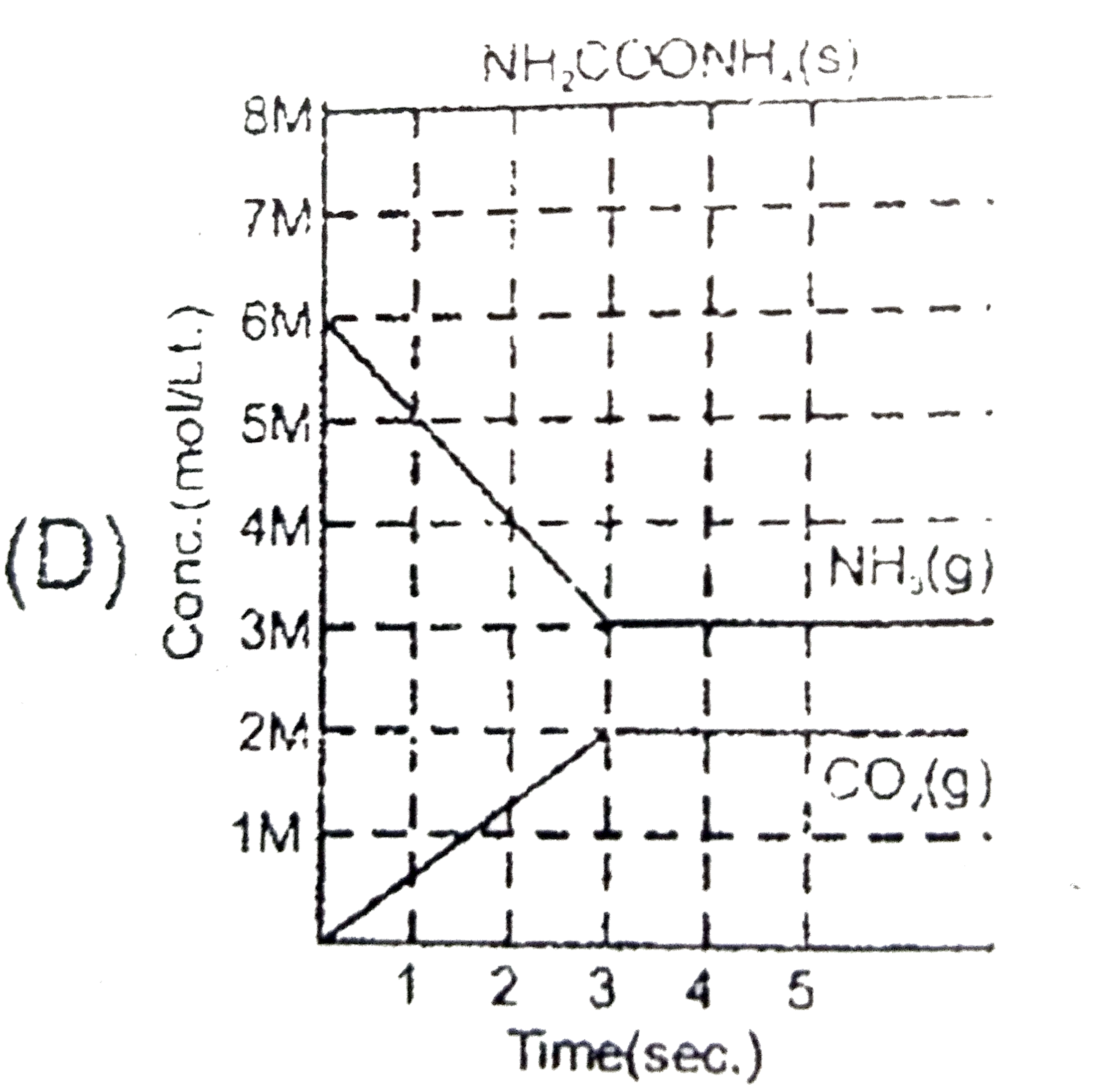Solid ammonium carbamate dissociates to give ammonia and carbon dioxide as follows:
NH3COONH4(s)⇔2NH2(g)+CO2(g)
At equilibrium, ammonia is added such that partial pressures of NH3 at new equilibrium equals the original total pressure (at previous equilibrium). If the ratio of the total pressures now to the original total pressure is a//b then report a+b.
The correct Answer is:58
NH2COONH4(s)⇔2NH2(g)+CO2(g)
2P∘P∘KP=(2P∘)2×P∘=4P2∘
3P∘P'KP=(3P∘)2×P=9P2∘.P
P=49P∘
PtPt=3P∘+49P∘3P∘=3127
Topper's Solved these Questions
- CHEMICAL EQUILIBRIUMBOOK - RESONANCECHAPTER - CHEMICAL EQUILIBRIUMEXERCISE - Exercise-2 (Part-3)
34 Videos
- CHEMICAL EQUILIBRIUMBOOK - RESONANCECHAPTER - CHEMICAL EQUILIBRIUMEXERCISE - Exercise-2 (Part-4)
6 Videos
- CHEMICAL EQUILIBRIUMBOOK - RESONANCECHAPTER - CHEMICAL EQUILIBRIUMEXERCISE - Exercise-2 (Part-1)
28 Videos
- CHEMICAL BONDINGBOOK - RESONANCECHAPTER - CHEMICAL BONDINGEXERCISE - Inorganic chemistry (Chemistry Bonding)
49 Videos
- D & F-BLOCK ELEMENTS & THEIR IMPORTANT COMPOUNDS BOOK - RESONANCECHAPTER - D & F-BLOCK ELEMENTS & THEIR IMPORTANT COMPOUNDS EXERCISE - Match the column
1 Videos
Similar Questions
Solid ammonium carbamate dissociate to give ammonia and carbon dioxide as follows
NH2COONH4(s)⇔2NH3(g)+CO2(g)
which of the following graph correctly represents the equilibrium.
View SolutionSolid Ammonium carbamate dissociates as:
NH2COONH4(s)⇔2NH3(g)+CO2(g).
In a closed vessel, solid ammonium carbonate is in equilibrium with its dissociation products. At equilibrium, ammonia is added such that the partial pressure of NH3 at new equilibrium now equals the original total pressure. Calculate the ratio of total pressure at new equilibrium to that of original total pressure. Also find the partial pressure of ammonia gas added.
View Solution
Knowledge Check
Solid ammonium cabamate dissociae to give ammonia and carbon dioxide as folows
NH2COOMH4(s)⇔2NH2(g)+CO2(g)
which of the following graph correctly represents the equilibrium.A B
B C
C D
D
Ammonium carbamate dissociates as :
NH2COONH4(s)⇔2NH3(g)+CO2(g) , In a closed vessel containing ammonium carbamate, at equilibrium, CO2 is added such that partial pressure of CO2 now equals three times the original total pressure. Calculate the ratio of total pressure now to the original pressure :A3127B119C2731D299Solid ammonium carbamate dissociates as follows:
NH2COONH4(s)⇔2NH3(g)+CO2(g)
At equilibrium, total pressure is found to be 0.3 atm at a given temperature. The value of Kp isA0.3atm3B0.108atm3C4.0×10−3atm3D0.158 atm
Ammonium carbamate (NH2COONH4) decomposes as:
NH2COONH4(s)⇔2NH3(g)+CO2(g)
In a closed vessel containing ammonium carbamate in equilibrium, ammonia is added such that partial pressure of NH3 becomes equal to original total pressure. Calculate the ratio of final total pressure to the original pressure.
View SolutionSolid Ammonium carbamate dissociates as:
NH2COONH4(s)⇔2NH3(g)+CO2(g).
In a closed vessel, solid ammonium carbonate is in equilibrium with its dissociation products. At equilibrium, ammonia is added such that the partial pressure of NH3 at new equilibrium now equals the original total pressure. Calculate the ratio of total pressure at new equilibrium to that of original total pressure. Also find the partial pressure of ammonia gas added.
View SolutionSolid Ammonium carbamate dissociates as:
NH2COONH4(s)⇔2NH3(g)+CO2(g).
In a closed vessel, solid ammonium carbonate is in equilibrium with its dissociation products. At equilibrium, ammonia is added such that the partial pressure of NH3 at new equilibrium now equals the original total pressure. Calculate the ratio of total pressure at new equilibrium to that of original total pressure. Also find the partial pressure of ammonia gas added.
View SolutionSolid Ammonium carbamate dissociates as:
NH2COONH4(s)⇔2NH3(g)+CO2(g).
In a closed vessel, solid ammonium carbamate is in equilibrium with its dissociation products. At equilibrium, ammonia is added such that the partial pressure of NH3 at new equilibrium now equals the original total pressure. Calculate the ratio of total pressure at new equilibrium to that of original total pressure.
View SolutionNH4COONH4(s)⇔2NH3(g)+CO2(g). If equilibrium pressure is 3 atm for the above reaction, Kp will be
View Solution
